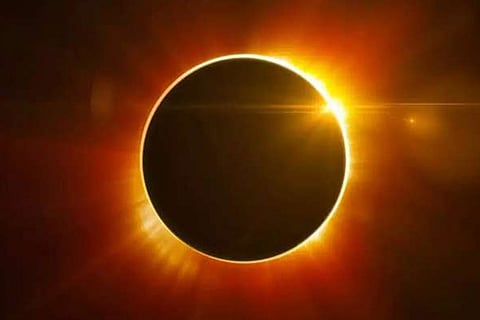

Chennai
One should not look at the Sun directly for even a little period without proper protection. Even when 99 per cent of the surface of the Sun is covered by the moon during partial eclipse, the remaining light is still intense enough to damage the eye, said Dr S Arvind from Dr Arvind Eye Care. “These light rays, particularly the non-visible infrared and ultraviolet rays, cause a burn in the central part of the retina called the foveola. This is called an eclipse burn,”he added. People can damage their retinas even if they look at the sun directly on an ordinary day, but as less light enters the eye due to contracted retinas, the inability to look directly at the sun, and human instinct to look away, lowers the risk.
During an eclipse, however, the pupils are dilated due to the darkness, and thus more harmful light rays can enter the eye, said Dr Arvind. “Due to the gravitational pull during an eclipse, more light is trained towards the Earth as well,” he added.
The symptoms include reduced visibility, blind spots or central scotomas, and tinting or disruption of vision and shape perception. “This is permanent damage to the retina,” said Dr S Preethi from Dr Agarwal’s Eye Hospital.
Proper solar filters with certified appropriate optical density against radiation which are safe to theeyes should be used in front optical devices and the naked eye, the doctors said.
Thursday’s eclipse will be visible in Saudi Arabia, Qatar, United Arab Emirates, Oman, India, Sri Lanka, Malaysia, Indonesia, Singapore, Northern Mariana Islands, and Guam. In India, the annularity phases will be seen within a narrow path grazing the southern Indian peninsula through Karnataka, Kerala and Tamil Nadu before crossing the Bay of Bengal for northern Sri Lanka. The people of the southern part of the country will be fortunate to see a greater part of the partial solar eclipse because of the geometry of the eclipse path.
PRECAUTIONS
Visit news.dtnext.in to explore our interactive epaper!
Download the DT Next app for more exciting features!
Click here for iOS
Click here for Android